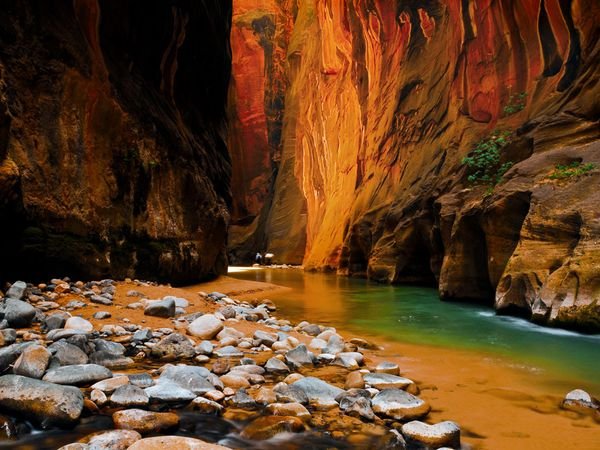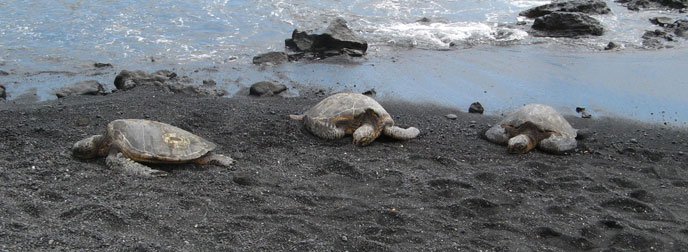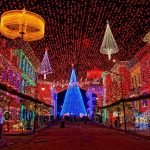As a mom of an adventurous teen – often we take the time to find new exciting places to explore. The United States is blessed to be home to a variety of incredible national parks. Some parks attract visitors with majestic mountains, valleys and rivers, while others offer out of this world flat, dry, desert like landscapes. All, however, beckon local and international travelers with one thing: an untouched beauty that begs to be captured through the lens of a camera.
With the promise of sunny days, cool breezes and potential wildlife encounters, spring and summer are by far the best times of the year to visit some of the national parks America has to offer. Below is a short list of great U.S. National Parks to visit this year.
 Death Valley National Park
Death Valley National Park
Perhaps one of the most unique parks in the U.S., Death Valley National Park greets visitors with record breaking high temperatures in the summer, so you’re going to want to do your best to avoid this park from June-September. If you’re dreaming of perfect conditions, your best bet is to visit Death Valley during the Spring when daily temperatures are in the range of 70-80 degrees Fahrenheit and scattered rain showers bring an abundance of wild flowers and life to the valley.
When visiting, make sure to bring a lot more water than you think you will need. It’s never a bad idea to have too much water in Death Valley.
The main road traveling through Death Valley from east to west is California Highway 190 and there are various routes that lead you into the park.
 Zion National Park
Zion National Park
Views, views and more views are exactly what you’ll find here. Zion National Park is one of my favorite national parks in the U.S., mostly due to the massive sandstone cliffs varying in colors of red, cream and different shades of brown. The park offers a wide variety of hiking available to the public. If that’s not enough, the outdoorsy types will thrive with an array of activities to choose from including: backpacking, camping, birding, cycling, climbing, canyoneering, and much more.
The Narrows, a slim and winding canyon popular with tourists is a great way to view a unique section of the park. Here you’ll find a river bed generally only 20 to 30 feet wide with gorge walls extending high into the sky. When visiting, speak with a park ranger at the visitor center before attempting this hike so that you’ll get any and all updated weather conditions.
Other hikes you might be interested in are Angels Landing, Hidden Canyon and Canyon Overlook.
Zion National Park is located in Springdale, UT on State Route 9 and the best accommodation option in town is the Zion Park Motel.
 Bryce Canyon National Park
Bryce Canyon National Park
A sight to behold, Bryce Canyon National Park, also located in Utah, is a crowd pleaser with a combination of both hoodoos (tall skinny spires of rock) and forests all in one place. Here you’ll find viewpoints and hikes of every kind both in the canyon and along the rim. For those who want to really dive into the history of the park, check out the ranger lead programs. If you love a good adventure, take a horseback or mule back ride into the canyon for a few hours.
The best way to see the park is to spend a few days here. Both camping and lodging are available and great for those looking to see as much of the park as possible, but note that hotel options are very limited.
Tip: Bryce Canyon is located approximately 75 miles north of Zion National Park, so both parks can be visited in one trip.
 Hawaii Volcanoes National Park
Hawaii Volcanoes National Park
The island of Hawaii possesses 11 of the 13 possible climates available on planet Earth, making it one of the most unique pieces of land formation in the entire world. Because of this, you can literally drive into each climate within the span of a day.
Hawaii Volcanoes National Park is no exception to containing multiple climates. Here, you’ll find yourself immersed in rainforest and desert lava fields with steam vents and much more – all in one trip. With so many different hiking options, most visitors will take a few days to explore the park, which allows them to really take in each section. If you don’t like to hike, try a drive on the Chain of Craters Road, a 20 mile stretch that descends 3,700 feet to the coast granting drivers an impressive view of the ocean below. The Chain of Craters Road ends at a 2003 lava flow path where you’ll be able to get out and explore.
For the best views of one of the park’s lava lakes, visit at either dawn or dusk where you’ll see the red of the molten lava contrasting against the darkness of the sky. Make sure to have your camera ready, you’ll want to capture this moment.
Hawaii Volcanoes National Park is located on the Big Island of Hawaii on Highway 11, about 30 miles southwest of Hilo and 96 miles southeast from Kailua-Kona.







